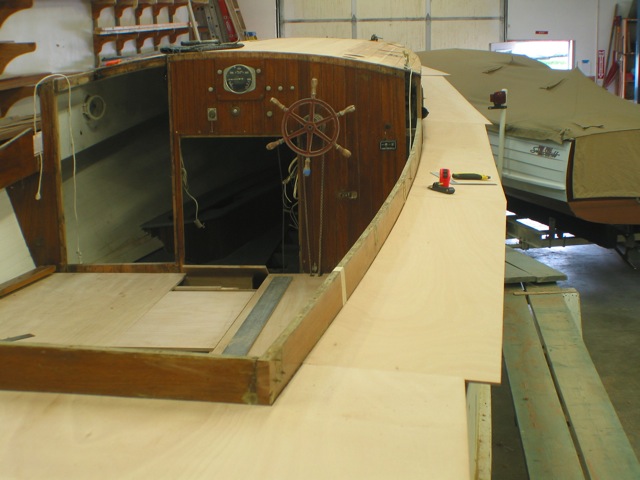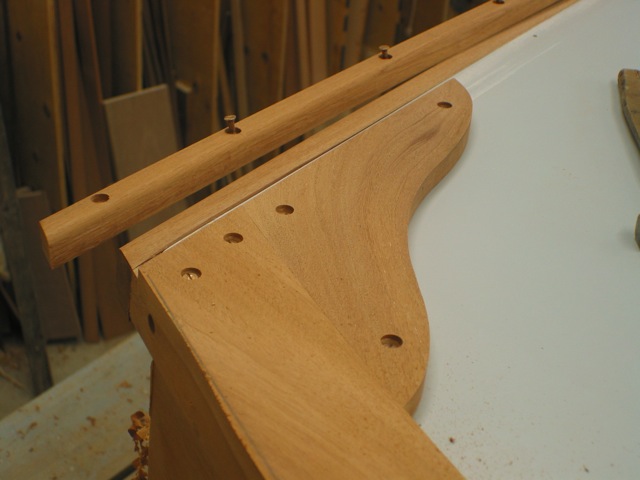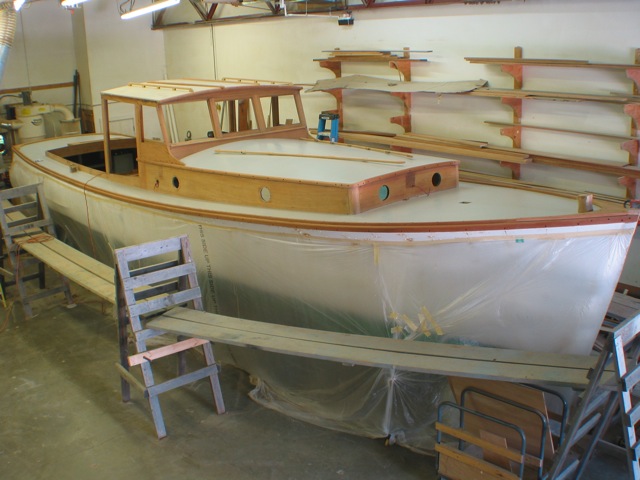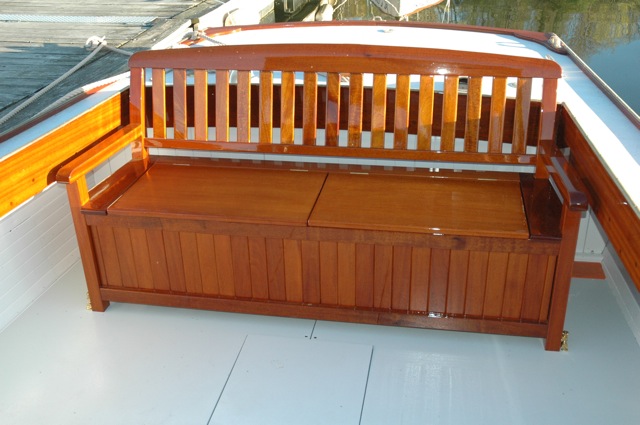36’ Maine Picnic Boat

MADDY SUE was built in 1932 in Southwest Harbor, Maine on Mount Desert Island, and had a long career with several owners. She was built by Chester Clement for Francis Spurling, who christened her TRAILAWAY. Originally she was just an open hull with a small fore-deck and steering station. The local fishermen would set up canvas spray hoods. By the end of the 1930’s the local boats were changing. The influx of summer residents completely altered the economy and culture of the region. Prior to their arrival, Mount Desert Island had a few very isolated communities that were completely dependent on the sea. Fishing and lobstering were the main occupations, with men migrating inland during the winter to work in the forests logging. The resources of coastal Maine: fish and lumber, where shipped south to the major cities.
The summer population demanded recreation which was on the sea, and the outsiders turned to the local fishermen and began hiring them for excursions aboard their boats. The fishermen quickly discovered they could make more money from cleaning up their boats and taking passengers than they could from fishing. Soon these boats were called “day boats” or more commonly today, “picnic boats.” If boat owners continued to fish it was in the fall and early spring, and they became boat captains in the summer.
Chester Clement was a legendary boat builder in the region. Some people argue he should be credited with building the first lobster yachts, but everyone agrees that the beauty of his designs influenced all the boat builders that followed him, particularly Raymond Bunker, who worked with Clement and took over his shop after his death.
MADDY SUE was one of the oldest picnic boats left in the region, but the boat had fallen on hard times. The owner could not pay the storage fees and eventually the boat yard owner was forced to seize her. She sat for nearly twenty years in a boathouse on Cranberry Island until she was featured in a short article in WoodenBoat magazine. The author wrote about her story in 2011, describing her long history and the sad state she was in. Jan Rozendaal of Burlington, Vermont began negotiating with the owner and bought MADDY SUE and brought her to Darling’s Boatworks in Charlotte, Vermont, eighty years after she was built.
I became involved in the project when Jan called me early in 2012 and asked if I would be willing to work on the restoration. I began in the Spring and collaborated closely with George Darling on the restoration. MADDY SUE looked fairly solid, but upon closer inspection she had a lot of problems.
After grinding all the paint off the decks and sanding it smooth, I refastened the original strip planked deck with stainless steel ring nails. Over that we covered the decks with a layer of six millimeter marine plywood completely bedded in epoxy and nailed. We covered the plywood with two layers of fiberglass cloth and epoxy. The final finish was Awlgrip (a special epoxy paint). MADDY SUE now has a long-lasting, completely leak proof deck and cabin top.
The boat was built in typical Maine style: steam bent white oak ribs with cedar planking and strip planked decks. The hulls of these boats have tightly radiused curves, and the builders used to cut the frames down the middle before they steamed them. This created something similar to a laminated frame, allowing the two halves to slide past each other when they were bent. The boat builders used galvanized nails to fasten the planking to the frames. They used long nails that actually passed completely through the frames and were bent over on the inside of the hull. Many of the frames were cracked where they made a tight turn near the keel.
This type of construction was fast and solid, but MADDY SUE had spent her entire life in salt water, so these iron nails were badly corroded. She showed rust streaks all over her white painted hull. We discovered that at some point in her life someone had refastened her with steel screws. Below the waterline the newer screws were actually in worse shape than her original nails. I began by carefully putting in new bronze screws below the waterline.
MADDY SUE’s cedar planking was generally in good shape and needed very little repair. For her frames, I could not bend in new frames without taking apart the decks and other internal framing, so I took patterns of the shapes and steam-bent laminations that I later glued to make curved laminated frames.
The cockpit floor was in very bad shape. At some point it had been replaced with inferior materials. We ordered white oak and re-framed the cockpit and then fashioned new floor panels out of marine plywood. The original steam-bent oak transom was not rotten, but Jan wanted a varnished mahogany transom, so I removed the original and laminated a new one out of three layers of six millimeter marine plywood. We then glued a veneer of mahogany over that. Eventually all the mahogany on the boat, new and old, received twelve coats of varnish.
I replaced the boat’s mahogany rub-rails, toe-rails and taffrails. At Darling’s Boatworks, all varnished trim is sealed with epoxy where it contacts the hull, and a poly-sulfide compound is put down to make sure that no moisture can get underneath the mahogany and deteriorate the varnish. In restoring the cabin, windshield and steering station we made every effort to save any original material that we could. This meant replacing various parts with new mahogany.
Most of the old hardware and instrument panel was saved and reused. Jan insisted on adding two new bronze portholes in the forward face of the cabin, and adding a mahogany bench for the steering station. I also built a bench for passengers based on one we had seen in old photographs of MADDY SUE.
My feature article on the boat and its restoration was the cover story of the May/June 2014 issue of WoodenBoat magazine, issue #238.












© Copyright Douglas Brooks, 2007 - 2018. All rights reserved
